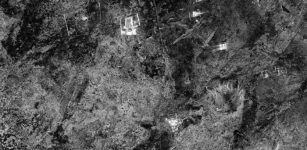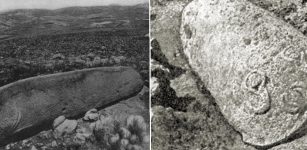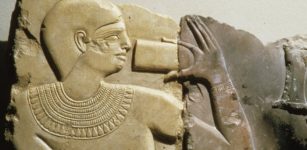DNA Breakthrough – New Human Gene Cluster Sequence Discovered
Jan Bartek - AncientPages.com - Scientists have discovered a new repeat gene cluster sequence that is exclusively expressed in humans and non-human primates.
The discovery, detailed in a study published in Science Advances, is a breakthrough for human genome biology and has wide-ranging implications for future research in transcriptional regulation, human evolution, and the study of repetitive DNA sequences, according to the authors.
Credit: Adobe Stock - ipopba
"This is an unbelievable discovery of the first elongation factor that is repeated within the human genome and is very primate-specific," said Ali Shilatifard, Ph.D. who is also director of the Simpson Querrey Institute for Epigenetics and a professor of Pediatrics.
Over the last two decades, rapid advancements in genome sequencing technologies have accelerated research exploring the genetic structure of various regions throughout the human genome. Larger regions of the human genome are composed of repetitive DNA sequences, dubbed genetic "dark matter" by experts, which until recently was unidentifiable using traditional short-read DNA sequencing technology.
The recent development of long-read DNA sequencing, however, has enabled investigators, including Shilatifard's team, to investigate these long "dark matter" sequences and characterize their role in genetic diversity and evolution.
In the current study, while characterizing a cancer-inhibitor compound in human cell lines, Shilatifard's team stumbled upon a group of previously uncharacterized genes encoding the protein Elongin A3, or ELOA3. This protein is closely related to the ELOA protein, which has been previously studied for its role in regulating RNA polymerase II (RNAPII) transcription, a process essential for gene expression.
"Generally, a single human protein is encoded by a single gene and closely related proteins may be encoded by separate genes at different chromosomal locations. However, in the case of ELOA3, many genes located in the same genetic locus encode the identical protein, making it an intriguing subject for study," said Marc Morgan, Ph.D., former Associate Research Professor in Shilatifard's laboratory at FSM and now lead scientist at St. Jude Research Children's Hospital and co-lead author of the study.
In collaboration with the laboratory of Evan Eichler, Ph.D., professor of Genome Sciences at the University of Washington School of Medicine, investigators further discovered that the ELOA3 gene cluster is unique to humans and non-human primates, and that the number of ELOA3 gene repeats varies by individual and across primate species.
"You may have 52 copies, I may have 27 copies, somebody else may have 32 copies. We don't know why, but we know that there are different repeat units in every individual, and this repeat unit is highly conserved among primates," Shilatifard said.
"These observations led us to propose that the ELOA3 gene cluster has undergone concerted evolution and gene homogenization within the primate species that we examined," Morgan added.
Using protein biochemistry techniques, the team found that ELOA3 forms a distinct protein complex from the ELOA protein to regulate RNAPII transcription through unique biochemical mechanisms.
"The discovery of ELOA3 as a novel primate-specific RNAPII elongation factor not only enhances our understanding of the human genome biology but also opens up a window for targeted drug design in cancer. The dynamic nature of the ELOA3 repeat cluster could be a reflection of its unique role in regulating gene expression variability among individuals," said Saeid Mohammad Parast, Ph.D., a postdoctoral fellow in the Shilatifard laboratory and co-lead author of the study.
According to the investigators, the next steps include determining where and when ELOA3 is expressed in the genomes of humans and non-human primates, and its potential role in the development of developmental disorders and diseases, including cancer.
"Considering the evolutionary conservation of this gene cluster among primates, it could shed light onto gene regulatory mechanisms unique to the human evolutionary lineage," Morgan said.
The study was published in the journal Science Advances
Written by Jan Bartek - AncientPages.com Staff Writer





















